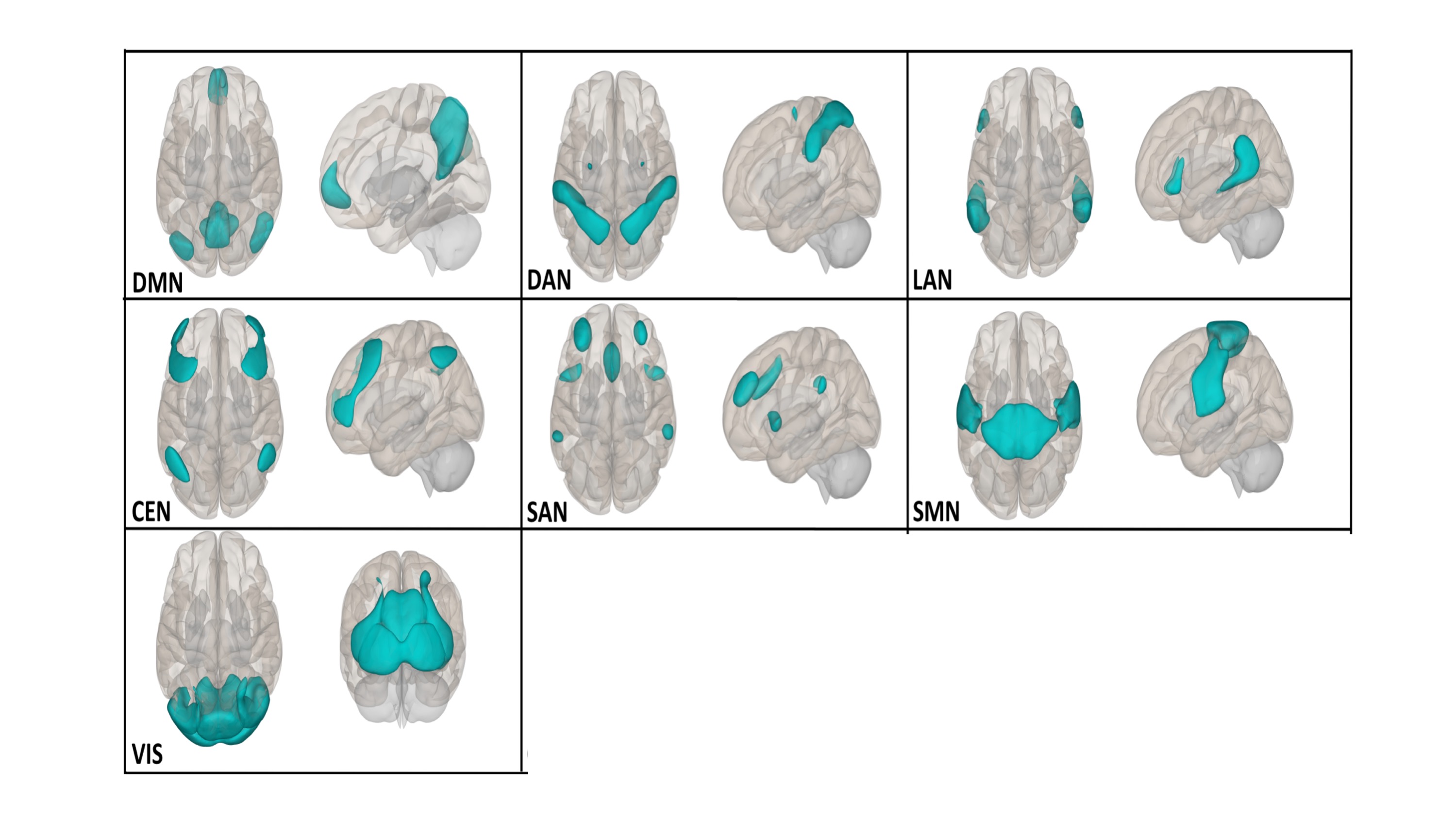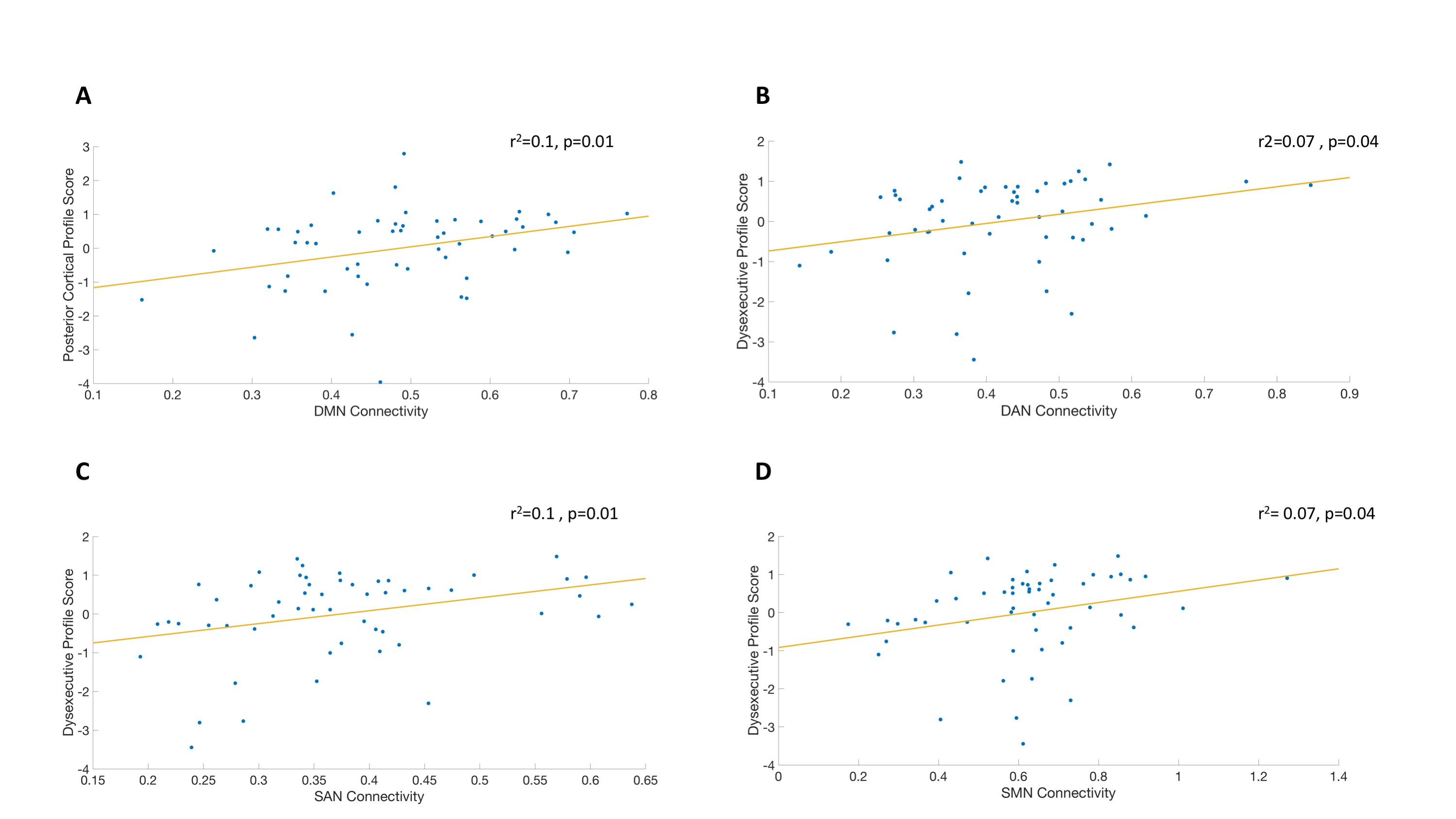Session Information
Date: Monday, October 8, 2018
Session Title: Parkinson's Disease: Cognition
Session Time: 1:15pm-2:45pm
Location: Hall 3FG
Objective: The objective of the current study is to relate the network degeneration and the dual syndrome hypothesis of cognitive impairment in Parkinson’s Disease (PD).
Background: Two influential theories aim to explain the cognitive symptoms of PD. The network degeneration hypothesis states that pathological changes selectively target neural networks, resulting in symptomatology (1). The dual syndrome hypothesis states that two cognitive profiles, the dysexecutive and ‘posterior cortical’ syndrome represent distinct pathological mechanisms of cognitive impairment (2, 3). However, it is unclear how network dysfunction is related to the dual syndrome hypothesis. We hypothesize that dysfunction in distinct cortical networks underlies the dysexecutive and ‘posterior cortical’ cognitive profiles.
Methods: 34 subjects with PD underwent resting state fMRI and neuropsychological assessment. Subjects were grouped with respect to cognitive status (16 PD MCI, 18 PD nonMCI). Healthy subjects were recruited as a control group (n=20). Intra-network connectivity was calculated among 7 cortical networks [figure1] and compared between groups, with the effect of aging controlled for. Next, factor analysis of cognitive scores was performed to identify two latent variables representing the dysexecutive and posterior cortical profiles. Connectivity levels in networks displaying significant differences underwent linear regression with the dysexecutive and posterior cortical cognitive factors.
Results: PD-MCI demonstrate decreased connectivity compared to HC in the default mode network (DMN), central executive network, and the sensorimotor network (SMN), independent of aging (p<0.05). PD-MCI demonstrate decreased connectivity in the dorsal attention network (DAN) compared to PD-nonMCI. Two latent variables of the cognitive scores were identified. Factor 1 loaded onto MOCA, attention, and executive function (dysexecutive profile), while Factor 2 loaded on visuospatial, memory, and language (posterior cortical profile). Connectivity in the DMN correlated selectively with the posterior cortical cognitive profile (p<0.05), while connectivity in the DAN and SMN correlated selectively with the dysexecutive profile (p<0.05) [figure2].
Conclusions: Dysfunction within distinct neural networks differentially contribute to the cognitive profiles hypothesized by the dual syndrome hypothesis. Specifically, dysfunction of the DMN contributes to the posterior cortical syndrome, while dysfunction of task-positive networks contributes to the dys-executive syndrome.
References: 1. Seeley WW, Crawford RK, Zhou J, Miller BL, Greicius MD. Neurodegenerative diseases target large-scale human brain networks. Neuron. 2009;62(1):42-52. 2. Kehagia AA, Barker RA, Robbins TW. Cognitive impairment in Parkinson’s disease: The dual syndrome hypothesis. Neurodegener Dis. 2012;11(2):79-92. doi:10.1159/000341998. 3. Williams-Gray CH, Evans JR, Goris A, et al. The distinct cognitive syndromes of Parkinson’s disease: 5 year follow-up of the CamPaIGN cohort. Brain. 2009;132(11):2958-2969. doi:10.1093/brain/awp245.
To cite this abstract in AMA style:
S. Lang, S. Jobert, B. Mejia-Constain, C. Degroot, A. Lafontaine, A. Hanganu, P. Bellec, O. Monchi. Distinct networks contribute to the dysexecutive and posterior cortical cognitive syndromes of cognitive impairment in Parkinson’s Disease [abstract]. Mov Disord. 2018; 33 (suppl 2). https://www.mdsabstracts.org/abstract/distinct-networks-contribute-to-the-dysexecutive-and-posterior-cortical-cognitive-syndromes-of-cognitive-impairment-in-parkinsons-disease/. Accessed April 18, 2025.« Back to 2018 International Congress
MDS Abstracts - https://www.mdsabstracts.org/abstract/distinct-networks-contribute-to-the-dysexecutive-and-posterior-cortical-cognitive-syndromes-of-cognitive-impairment-in-parkinsons-disease/


